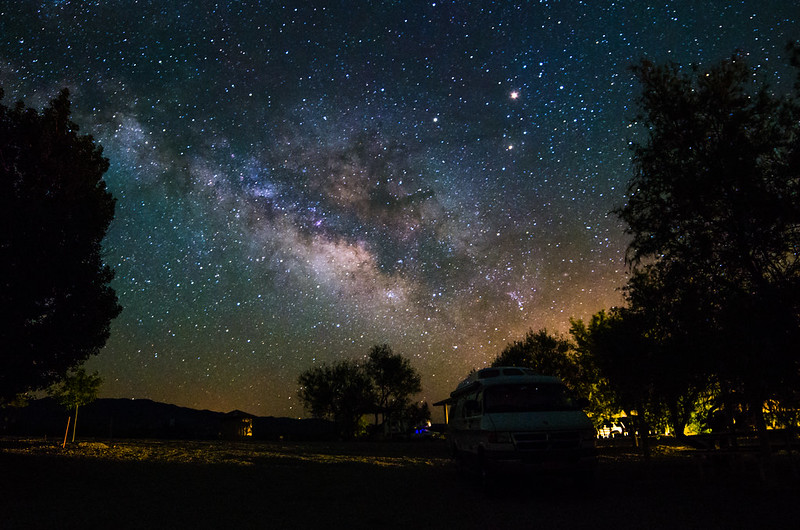 Originally posted by Ducky13
Originally posted by Ducky13 
... (stars & Milky Way), but am pretty clueless as to the technique. I have taken photos of the Northern lights in the past & was wondering if the same rules apply? Note that I am able to go to places with minimal light pollution. ...
Use your KP and DA 15mm lens to get started. You'll be able to apply much of what you learned with the Northern Lights for photographing the Milky Way and stars. Don't worry about the astrotracer yet. 15mm is wide enough to allow fairly slow shutter speeds without too much star movement.
Camera mode: Manual, 30 seconds, f4, ISO 3200.
- ISO 800 or 1600 can arguably give you a better result after processing, but are not as good for beginning because you'll see a very dark preview.
- I strongly urge using raw DNG format so you can process later. Use your remote and/or the built-in timer to decrease camera shake
- Disable shake reduction. If you use the timer that will happen automatically.
Focusing: Manual focus, turn on live view, aim at a very bright star or a very distant light, focus until the star is as small as possible. After you get focused be careful about accidentally bumping the lens and moving focus. Do not trust the infinity mark or hard stop because some lenses can focus beyond infinity due to manufacturing tolerances. If taking many photos, periodically zoom in to confirm that focus wasn't bumped of affected by changing nighttime temperatures.
Processing: I do most of my raw processing with Lightroom, but the Pentax DCU software can do it, too. I start processing by increasing the white slider to brighten the stars. I then play with the shadow, black point, and highlight sliders. A *little* bit of extra saturation; too much makes the Milky Way look unnatural. Pentax cameras often do a decent job when left in auto white balance but I also test moving the slider to the 3800K range. A little boost of the clarity slider can accentuate milky way detail. Sharpening and noise reduction come at the end.
Here's a sample of what to expect after processing. It was done with different equipment than you have but is a reasonable expectation after a little practice. In hindsight, I overprocessed this photo, and if I redid it I would back off some of the sliders.



 Similar Threads
Similar Threads 














 Post #2 by Aslyfox
Post #2 by Aslyfox








